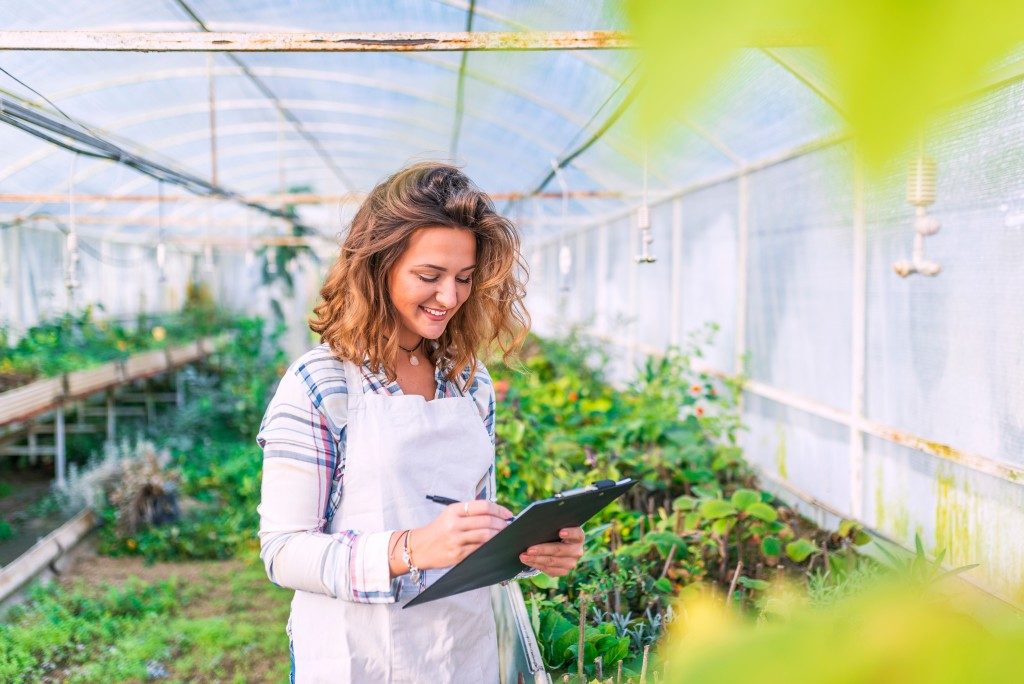A greenhouse brings many benefits to a grower, whether to help a hobby or for commercial reasons. Buying a small greenhouse allows a gardener to grow seedlings earlier in the season and protect garden plant during a cold snap. For commercial growers, large-scale greenhouses enable the growth of plants under controlled conditions to maintain production and improve profits. Greenhouses provide a temperature, light and humidity controlled, pest-free environment to enable seeds to germinate, saplings to grow stronger or new plant species to be trialed. Greenhouses provide owners with a head start in growing seedlings earlier, so they’re well-developed once the next season comes around.
When choosing a greenhouse, consider the following:
Size
Greenhouse suppliers frequently recommend buying a size bigger than estimated by the gardener. It is easier and more cost-efficient to purchase a larger greenhouse and increase the plants kept overtime than it is to expand a smaller greenhouse to accommodate new plants.
Location
Before buying a greenhouse, check for local zoning regulations and spend time understanding the implications for location and assembly. A number of neighbourhoods or planned developments require tenants to request permission before installing greenhouses. Other areas may have restrictions on the required size or setback requirements.
Also consider how the location will affect other outdoor activities, sight-lines and the neighbours’ views. Spend time visualising the size and position; mark-out the site of the greenhouse for a clearer understanding of the space required.
Assembly
Gather all the technical and content details from the manufacturer before buying a greenhouse. Check the dealers’ recommendations for site preparation, any items not included with the purchase and the ease of assembly. Most greenhouses are sold as kits that require assembly but some suppliers offer installation services.
Insulation and design
Insulation in a greenhouse helps control the temperature. The weather in the region dictates the amount of insulation required. Its covering should retain heat in the structure during the winter months and reduce costs in heater costs. Equally, during the summer months, insulation will protect plants from extreme heat conditions.
Panel clarity

The glass or plastic panelling that lets the natural light into a greenhouse comes in a variety of options. Some greenhouses are designed with clear coverings or panels; other models have opaque or translucent coatings. Some types of greenhouses have semi-diffused covers, providing gardeners with the benefits of both clear and diffused models.
Direct sunlight warms the soil, enabling germinating seeds to sprout and develop. If the purpose of the greenhouse is to germinate seeds and grow starter plants that will be transplanted outdoors, a transparent covering provides users with the benefit of bringing full and direct light onto the starter trays.
Opaque panels, on the other hand, provide diffused light. A diffused covering provides an even light for balanced foliage growth, preventing hot spots in the greenhouse. In addition, scattered light allows plants to develop a more balanced and compact structure.
Gardeners who want to use a dual-clarity greenhouse have the benefits of both clear and diffused covers. The semi-opaque panels allow enough light to propagate seeds in early spring while allowing the starter plants to grow within the greenhouse. The covers make it an all-purpose greenhouse.
Greenhouses have been the mainstay of many gardeners for decades. Although their purpose has remained the same, innovative designs and materials have improved their efficiency. Today’s greenhouses help those who want to get their hands dirty develop green fingers.

